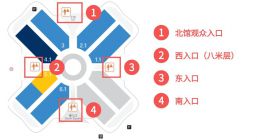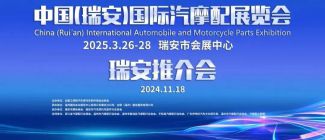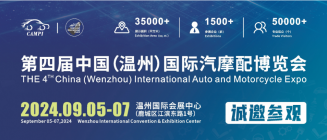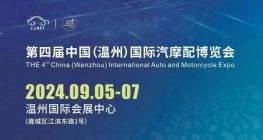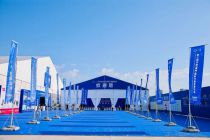"Reporting on our technology, products and vision can bring you the most traffic and attention." The words of Zhu Xiaotong, President of Tesla Greater China, have been continuously verified in the past 10 days.
From the official media to the crowd, Tesla’s “brake failure” has almost become a well-known topic. And Tesla's attitude and response to problems are constantly being examined under a magnifying glass.
More importantly, the Shanghai Auto Show's rights protection turmoil has not yet subsided, and accidents caused by Tesla's loss of control have occurred frequently in many places. On April 17, a wall crash occurred in Zengcheng, Guangzhou, killing one person. On April 25, a Tesla crashed into an electric car in Xiamen, causing four people on the electric car to be injured. On April 27, in Taicang, Jiangsu, a white Tesla rushed into a steamed bun shop and injured three people.
Amidst the chaos of public opinion, what are the problems with Tesla? How to solve the problem of brake failure? How to view the privacy and boundary issues of data?
All the people boycott Tesla
The fire on the roof of the Shanghai Auto Show completely made Tesla “out of the circle”. Nowadays, in many areas, from the uncle doorman to the factory security, they are afraid to avoid Tesla cars. Some factories even posted a notice overnight: Denying Tesla vehicles to enter the factory.
This is not the first time Tesla has encountered resistance. In March 2021, Tesla admitted that the camera in the car would monitor the behavior of the driver, and some agencies immediately made a choice to prohibit Tesla brand vehicles from entering the area. In October 2020, US investment bank Morgan Stanley analyst Adam Jonas predicted that due to data privacy and security issues, Tesla may not have much future in China. It will reach its peak in the middle of the next ten years, and then usher in a cliff-like decline, and finally sales will drop to 0 in 2030."
The vehicle of Ms. Zhang, a human rights defender at the auto show, wrote "brake failure" Source: Internet
The rift between and the Chinese market is getting deeper and deeper, which is one of the last results Tesla wants to see.
Since the first batch of Model S was delivered in the Chinese market in April 2014, Tesla has been showing good wishes to Chinese consumers. For this purpose, a "China Committee" has been established to study the Chinese market and legal policies. In addition, this electric car upstart has not hesitated to break the principle of “no marketing”. From organizing a test drive for Chinese auto media to actively interacting with the media by the company’s executives, it completely changed its cold attitude in the United States.
Chinese consumers are also holding out real money to give back to Tesla. In 2020, the cumulative sales of Tesla in China will exceed 130,000, and the sales will further "blow out" into 2021. 15,484 units were delivered in January, 18,318 units were delivered in February, and it soared to 35,478 units in March. According to this sales trend, it is a high probability event that cumulative sales doubled in 2021.
However, Tesla's reputation and trust in the Chinese market have gradually been exhausted in each rights protection incident. Many car owners who have been attracted by Tesla's technology aura have also embarked on the road of protecting their rights after communicating with each other to no avail.
The reason why car owners "off powder" is Tesla's attitude toward problems. At the Shanghai Auto Show on April 19, in response to female car owners’ rights protection on the roof, Tesla’s vice president Tao Lin replied strongly that “there is no way to compromise” and there is no reason to meet the demand. “I think she is also very professional. There should be (people)."
The hard-line attitude and unkindly speculating about the motives of defenders made Tao Lin a negative example of handling public opinion crises, which also triggered naming and criticism of major official media. Although Tesla subsequently apologized and released some of the data, the turmoil has obviously not subsided.
"This is Tesla's consistent attitude in dealing with problems, and there is no awe in safety and car owners' feedback." Tesla owner Dong Wei expressed his expectation for Tesla's response to problems. Previously, his Tesla vehicle had lost control and crashed into a bus stop. When he raised a question about driving data, Tesla did not respond. He spent two to three million yuan in the aftermath of the accident. Divide the money".
At 11:30 p.m. on April 25, after Ms. Zhang, the person who defended rights on the roof of the Shanghai Auto Show, spoke for the first time after she was released, Dong Wei immediately dialed the person’s phone to ask about the progress. According to Ms. Zhang, the personal data provided by Tesla is still concealed and unreasonable. The matter is far from resolved, and rights protection will continue.
Today, the turmoil of Tesla’s “brake failure” continues to ferment, and it is also subtly changing the attitude of some potential Tesla owners. A "prospective car owner" who originally planned to buy a Tesla Model 3, after seeing the Tesla brake failure, chose to continue to wait and see for a while, "and there are also good domestic electric car brands, and they may choose them."
"All products may have problems, and some of them are acceptable to everyone." In Dong Wei's view, the most unacceptable thing is that when a problem occurs, he throws the pot on the person who raised the problem. He had also encountered a situation where the brakes could not be applied before. Fortunately, he was far away from the vehicle in front and the speed was not fast. Later, the vehicle gradually stopped to the side of the road and returned to normal.
Source: Photo courtesy of the respondent
"I'm not sure if the next second will bring me any accidents. When passing through more complicated road sections, the speed will be reduced particularly slowly." Now Dong Wei's two car stickers on the rear of the car clearly read-- When the brakes fail, keep away from passers-by; when steering is out of control, keep away from others.
"Brake failure" reason or no answer
Faced with the pressure of public opinion, since April 19, Tesla’s official Weibo has updated the progress of handling the “brake failure” incident almost every day, and issued separate statements regarding the two accidents in Zengcheng, Guangzhou and Xiamen, Fujian. Some netizens complained that Tesla should set up a special accident publicity team. After all, Tesla's positive response did not extinguish the doubts of the defenders.
On April 22, in response to an auto show rights defender Ms. Zhang's vehicle out of control accident, Tesla announced the data one minute before the accident and insisted on denying the "brake failure." Tesla believes that the vehicle is driving at a relatively high speed of 118.5km/h, and the driver starts to depress the brake pedal lightly. As the owner applies the brake deeply and the automatic braking system is turned on, the vehicle speed eventually drops to 48.5km/h. , And then a crash occurred.
The data also made Tesla more and more black. Zhang Xiang, a member of the new energy and intelligent networked automobile industry expert think tank of the Ministry of Industry and Information Technology, told Future Auto Daily that the current data released by Tesla lacks some key data such as brake sensors and brake pedal sensors. "This data has no credibility and is a transfer. The sight or delay does not prove Tesla's innocence."
Different from traditional fuel vehicles, Tesla is a smart electric vehicle. The entire braking process involves both software decision-making and human factors. To restore the process of the car owner’s braking, the data including the motor, vehicle controller, pedal depth sensor, and pedal switch need to be put together for analysis. Only in this way can we comprehensively determine whether the braking force is insufficient due to human factors or the braking failure of the vehicle. .
This also reflects the importance of travel data. At present, the EDR (Event Data Recorder) equipped with Tesla vehicles contains brake data, safety systems, and electronic brake information. This function is similar to a "black box" on an airplane. However, at present, Tesla has not released more detailed data, which has become a key element for the outside world to determine its "brake failure" real hammer.
In fact, despite the incomplete data released by Tesla, there are still many doubts about the "brake failure" itself. Zhang Xiang said that Tesla's autonomous driving has three technical levels: perception, decision-making, and execution. At present, the hardware including brake pads belongs to the execution layer, and its technology is very mature. The problem may lie in the perception layer of the Tesla sensor, but because there is no data, it is still uncertain which link has the problem.
An auto parts practitioner told Future Auto Daily that in terms of hardware, Tesla’s new technology of integrated wiring harness may also have problems. Tesla has always been committed to reducing the length of the wire harness. As the main body of the car circuit network, the car wire harness is responsible for the function of connecting the car's electrical equipment. Once a problem occurs, it will cause the vehicle control to malfunction.
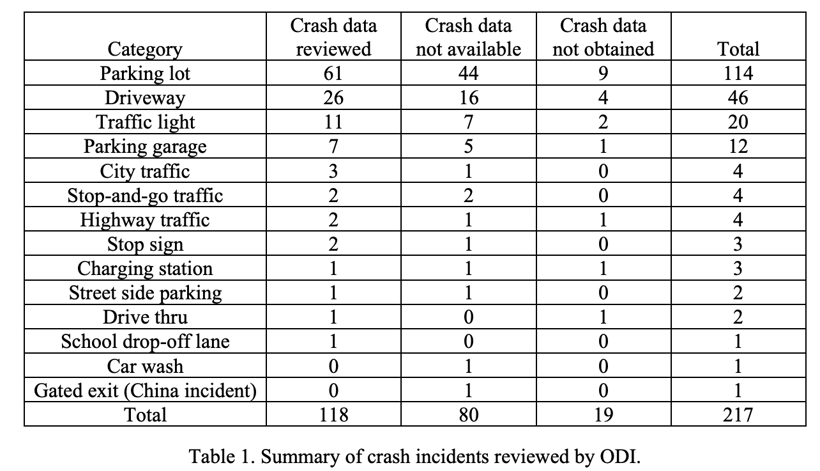
NHTSA investigates Tesla collision. Source: NHTSA
The National Highway Traffic Safety Administration (NHTSA) once launched an investigation into Tesla’s “runaway acceleration”. After a year-long investigation period, NHTSA announced the relevant investigation results on January 8, 2021. The investigation showed that 246 Tesla out-of-control acceleration incidents were caused by driving accidents caused by drivers stepping on the pedal incorrectly. This also means that in a car accident, human error has a factor.
Why are Tesla vehicles prone to operating errors? A big difference lies in its single-pedal mode. The single-pedal mode can control the start, acceleration, deceleration and stop of the vehicle through the electric door pedal. In this way, the kinetic energy can be recovered through the reverse current, which can achieve the purpose of saving energy and improving battery life. Zhang Kangkang, director of the Additive R&D Center of Tsingyan Huake New Energy Research Institute, said that compared with fuel vehicles, this driving mode has changes in human-computer interaction and is more prone to misoperation.
"Now the truth of Ms. Zhang’s accident can no longer be found." Zhang Xiang told Future Auto Daily that if it is to be resolved, one way is to transmit the data to a third-party data platform, and the other is to install a driving recorder on the car. "But now there is no way to trace the truth of the scene at that time, this matter has no solution."
Who is the "referee"?
With the push and pull of car owners and Tesla in the process of defending their rights, the key direction to solve the problem-driving data permissions and determination of responsibilities-began to gradually become clear.
After reviewing the entire rights protection, the car owner initially requested Tesla to disclose the data, and Tesla rejected this request. Under the pressure of public opinion, Tesla announced the driving data, but the family members of the car owner believed that the data was insufficient, and accused Tesla of infringing on personal privacy, demanding that the data be revoked, and at the same time not accepting third-party testing agencies designated by Tesla.
In fact, “there is no authoritative third-party inspection agency that can detect the liability of smart cars in traffic accidents.” Zhang Xiang told Future Auto Daily that for traditional fuel vehicles, rear-end collisions are basically the owner’s responsibility, but smart cars In the process of driving, the advanced driving assistance system will participate in driving. In the event of an accident, the car company must bear certain responsibilities. But at present, "the country has not yet issued laws and regulations on smart cars with autonomous driving functions, and it is difficult to clarify the responsibilities of car owners and car companies."
At present, some cities already have new energy vehicle data recording platforms. Take Shanghai as an example. The data of new energy vehicles registered in the area will be recorded in the Shanghai New Energy Vehicle Public Data Collection and Testing Research Center. Official data shows that as of now, nearly 420,000 vehicles have been connected, and the engine data, alarm data, and battery data of each vehicle can be tracked in real time.

Source: Tesla
"If Tesla wants to upload data, it should be a very simple thing, but they didn't do that." Zhang Xiang analyzed that Tesla's autopilot technology is currently leading in the world, but its software system is not counted. Perfect and prone to bugs. Once the data is made public, it will be easy for the outside world to find its loopholes. In his view, Tesla did not upload the data to a third-party platform, causing the car company to be both an athlete and a referee. "Managing the data by yourself and then taking it out is tantamount to guarding and stealing, and it has no credibility."
Unlike fuel vehicles that can obtain driving information through the OBD interface, smart cars with advanced driving assistance functions need to analyze driving data before applying it. This is largely confidential corporate information, which is difficult for ordinary car owners to obtain.
In response to the car owner’s family accusing Tesla of infringing on personal privacy, Lawyer Zhu Jieping, the founding partner of Taikun Law, told Future Auto Daily that the current supervisory body of smart car data is not clear, how to determine the authenticity of the data has problems, and the right to confirm smart car data And there is no clear legal requirement for the ownership of rights, "so the current legal requirements for the ownership of autonomous driving data are not clear enough."
Zhu Jieping stated that the state should force car companies to store the acquired data in an unmodifiable manner, or store the resulting data in at least two third-party organizations. The purpose of ensuring data security is to use the data reasonably and fully. Shanghai Shenlun Law Firm Xia Hailong also expressed the same view on Future Auto Daily. He believes that regulators can discuss with car companies the third-party custody and sharing mechanism of big data, and gradually clarify car owners by continuously improving the efficiency of using big data. Data collection specification.
With the frequent occurrence of rights protection incidents, regulatory loopholes in the smart car industry have gradually emerged. This time Tesla disclosed its driving data in China for the first time, which also highlights the importance of clarifying the responsibility of driving data in smart car accidents.
It is certain that the problems encountered by Tesla are not isolated cases, and the safety issues cannot be overemphasized. In order to enable users to truly feel at ease to experience and purchase smart cars, car companies and the industry need to do a lot.
AMS2024 Exhibition Guide | Comprehensive Exhibition Guide, Don't Miss the Exciting Events Online and Offline
Notice on Holding the Rui'an Promotion Conference for the 2025 China (Rui'an) International Automobile and Motorcycle Parts Exhibition
On September 5th, we invite you to join us at the Wenzhou Auto Parts Exhibition on a journey to trace the origin of the Auto Parts City, as per the invitation from the purchaser!
Hot Booking | AAPEX 2024- Professional Exhibition Channel for Entering the North American Auto Parts Market
The wind is just right, Qianchuan Hui! Looking forward to working with you at the 2024 Wenzhou Auto Parts Exhibition and composing a new chapter!
Live up to Shaohua | Wenzhou Auto Parts Exhibition, these wonderful moments are worth remembering!
Free support line!
Email Support!
Working Days/Hours!
